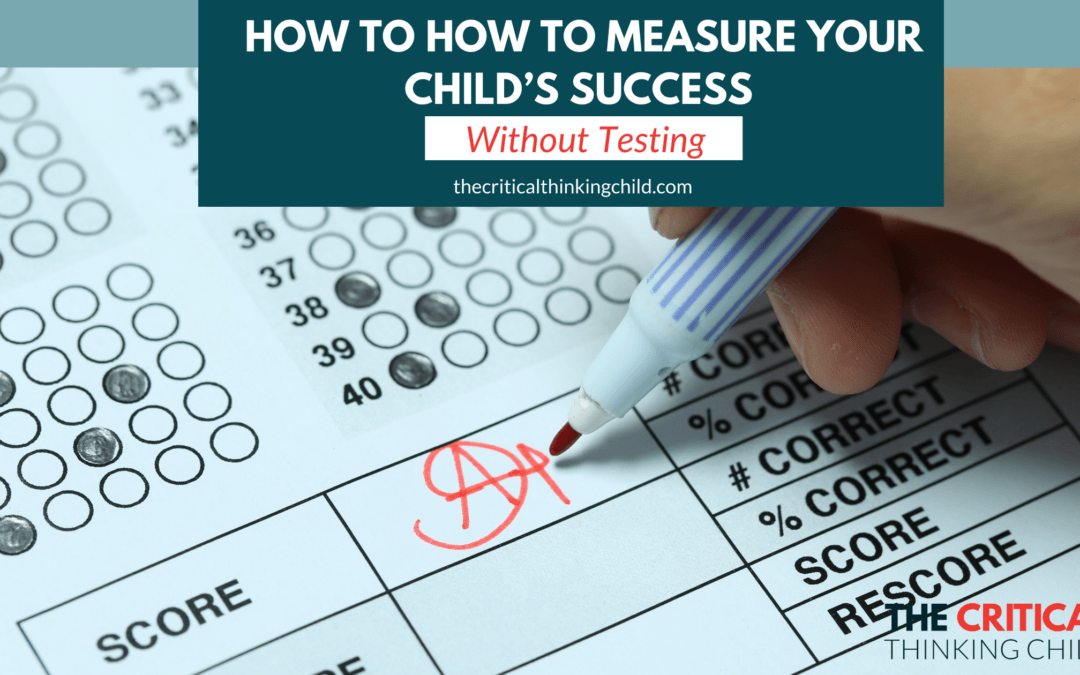Picture this scenario: your child started school or changed schools for the 2020-2021 school year. Because of the constant changes to the school schedule around the pandemic, your child’s district decided to cancel standardized testing altogether. You’re concerned because you don’t know how to gauge your child’s success without these standardized measures. Don’t worry—you’re not alone! Parents all over the country have faced similar situations over the past 18 months.
Today, we’ll introduce you to some alternate ways to measure your child’s progress. We’ll talk you through the 5 Ps: projects, portfolios, passion, performance, and personal reflection. We’ll briefly describe each of them and show how you can use each to measure your child’s successes.

Projects
Projects are a great way for your child to show what they’ve learned at the end of a unit in school. Many of us remember the days of the neverending science project from our own childhoods, but there are lots of other ways your child can show their creative learning. Take a look at projects assigned from school, or have your child do a project at home. If they’re learning about fractions, have them create a cookbook of favorite family recipes and include options for doubling or halving some of them. If they’re learning about the American Revolution, have them dress up as a historical figure and act out important events from that person’s life. This will give you a way to see not only that your child has mastered the facts, but also that they are able to extend and apply their learning.
Portfolios
Portfolios of student work are used in many private and charter schools in lieu of standard report cards or assessments. They are also used frequently in the gifted nomination process to show advanced thinking. Portfolios don’t need to be anything special; they’re simply several samples of work over time that show trends and learning progress. To create a writing portfolio at home, choose a writing sample weekly and use it to see gains over a several-month period. Even better, involve your child in the process and have them select the work they think best displays their learning.

Passion
While less tangible than a test score or a worksheet, passion for learning is certainly evidence that learning has occurred. If your child previously fought you every night to avoid reading but now eagerly picks out books to read to you before bed, you can consider that a huge success. Students are excited about learning when it is working for them. If you’re not sure what your child’s academic passion is, try watching what they do when they’re not in school and use that to engage them. They may love animals, so use that passion to help them select books about zoology or veterinarians.
Performance
You know your child best, but your child’s teacher sees them for hours each day and has valuable insights. Even if standardized test scores are not available, be sure to check in with your child’s teacher to ask how your child is performing in school. They will be able to tell you their strengths and areas of growth and are skilled at offering ways to help your child at home.

Personal Reflection
Don’t underestimate your child’s ability to reflect on their own learning! Even children as young as kindergarten are capable of reflection and goal setting. You can start this routine at home by keeping it positive at first; ask your child what they think their best subject is in school and how they know they are learning. As they get more comfortable with these types of conversations, you can gradually shift to asking about what they struggle with and how they think they can improve.
The key here is remembering not to panic. While test scores are helpful, keep in mind that they are only one measure of student progress. Selecting one or two of our 5 Ps is just as effective at measuring your child’s success!



